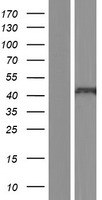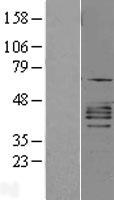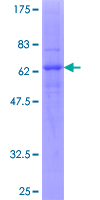order histories, retained contact details for faster checkout, review submissions, and special promotions.
Forgot password?
order histories, retained contact details for faster checkout, review submissions, and special promotions.
Locations
Orders Processing,
Shipping & Receiving,
Warehouse
2 Shaker Rd Suites
B001/B101
Shirley, MA 01464
Production Lab
Floor 6, Suite 620
20700 44th Avenue W
Lynnwood, WA 98036
Telephone Numbers
Tel: +1 (206) 374-1102
Fax: +1 (206) 577-4565
Contact Us
Additional Contact Details
order histories, retained contact details for faster checkout, review submissions, and special promotions.
Forgot password?
order histories, retained contact details for faster checkout, review submissions, and special promotions.
CXCR2
chemokine (C-X-C motif) receptor 2
CXCR2 is a member of the G-protein-coupled receptor family. This protein is a receptor for interleukin 8 (IL8). It binds to IL8 with high affinity, and transduces the signal through a G-protein activated second messenger system. This receptor also binds to chemokine (C-X-C motif) ligand 1 (CXCL1/MGSA), a protein with melanoma growth stimulating activity, and has been shown to be a major component required for serum-dependent melanoma cell growth. This receptor mediates neutrophil migration to sites of inflammation. The angiogenic effects of IL8 in intestinal microvascular endothelial cells are found to be mediated by this receptor. Knockout studies in mice suggested that this receptor controls the positioning of oligodendrocyte precursors in developing spinal cord by arresting their migration. This gene, IL8RA, a gene encoding another high affinity IL8 receptor, as well as IL8RBP, a pseudogene of IL8RB, form a gene cluster in a region mapped to chromosome 2q33-q36. Alternatively spliced variants, encoding the same protein, have been identified.
| Gene Name: | chemokine (C-X-C motif) receptor 2 |
| Family/Subfamily: | GPCR , Chemokine |
| Synonyms: | CXCR2, CDw128b, CD182 antigen, CMKAR2, CXCR-2, CD182, CXC-R2, IL-8R B, Il-8 receptor b, IL-8 receptor type 2, Il-8rb, IL8R2, IL8RB, Interleukin-8 receptor type B, GRO/MGSA receptor, Interleukin 8 receptor beta, Interleukin 8 receptor, beta, Chemokine (CXC) receptor 2, IL8RA, Interleukin 8 receptor B, Interleukin 8 receptor type 2 |
| Target Sequences: | nm_001557 NP_001548.1 P25025 |
Publications (5)








If you do not find the reagent or information you require, please contact Customer.Support@LSBio.com to inquire about additional products in development.









